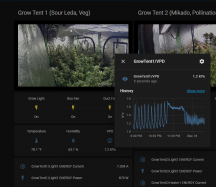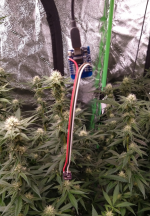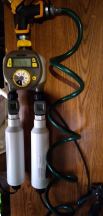PuffTheMagic
Super Active Member
I was wondering if anyone else is using Home Assistant to monitor or automate their grow operations? I had been using smart switches and the generic cloud hosted apps to set my growlight automations... but then when you factor in cameras and other sensors, managing bunch of different apps becomes a bit tiresome. I've started using HomeAssistant and find it to be pretty awesome. The learning curve is a bit steep but I'd say it's well worth it. Here is a little teaser of one of my dashboards...

I just wrote an automation to control my AC Infinity duct fan and turn it on using a VPD threshold instead of just temp or humidity. To monitor temp/humidity in my tent I have a esp8266 dev board flashed with Tasmota connected to a BME280 temp/humidity/pressure sensor. I have some current monitoring switches also flashed with Tasmota so I can see how much my lights and dehumidifiers are drawing.

Next step is getting my watering automated!

I just wrote an automation to control my AC Infinity duct fan and turn it on using a VPD threshold instead of just temp or humidity. To monitor temp/humidity in my tent I have a esp8266 dev board flashed with Tasmota connected to a BME280 temp/humidity/pressure sensor. I have some current monitoring switches also flashed with Tasmota so I can see how much my lights and dehumidifiers are drawing.

Next step is getting my watering automated!


